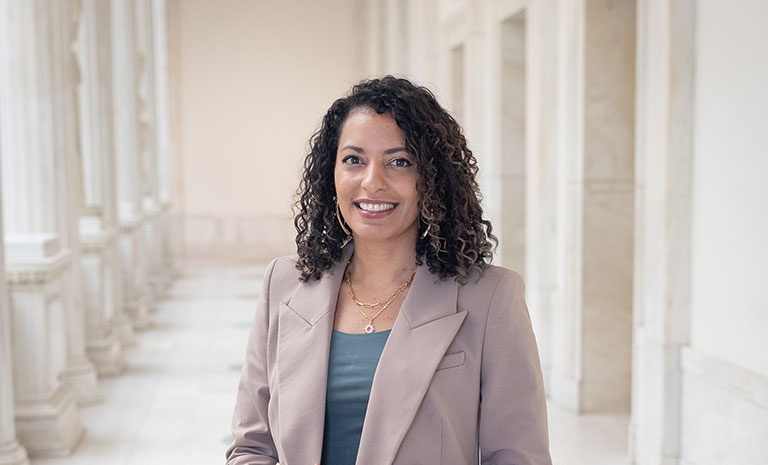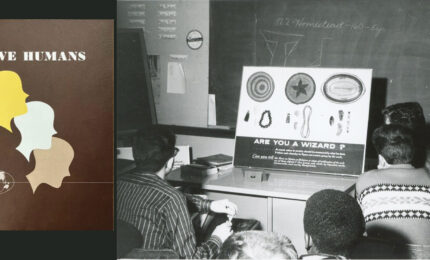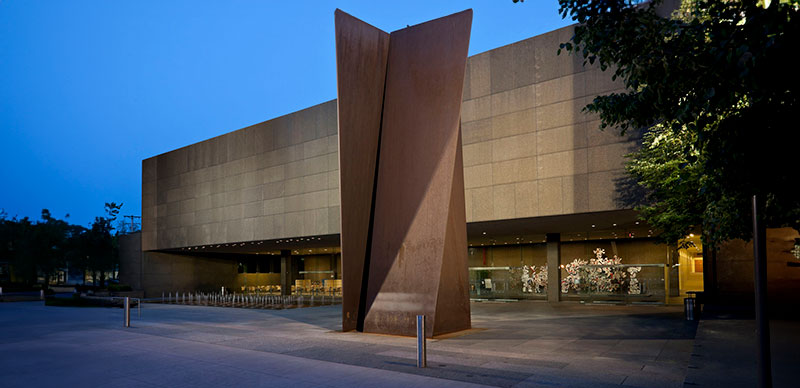 Photo: Renee Rosensteel
Photo: Renee RosensteelEditor’s Note: Winstead identifies as both a woman and a nonbinary person who uses she/they pronouns. You may notice a shift between pronouns in this article.
Even as a young child growing up in McKeesport, Pennsylvania, Gina Winstead was aware of certain societal inequities. There were the friends in elementary school who couldn’t have her over to play because their parents objected to her interracial household. She could see the inequities at the shelters where her mother, a social worker, served and cared for Black women and children. There were the experiences of Winstead’s father, a successful Black business owner in Pittsburgh, who was regularly pulled over because he drove a nice Chrysler and ultimately decided he had to leave the city to thrive. Even accessing the Carnegie Museums, which are supposed to be for all Pittsburghers, seemed to be a bigger hurdle for people at the margins. “I had access because of my parents and their intentionality, but the kids I grew up around did not have that access,” Winstead says. She is now working with Carnegie Museums to change that. In July 2022, Winstead became the museums’ first vice president for inclusion, diversity, equity, and accessibility (IDEA). Previously, they worked with 150 community partners on equity and diversity best practices as the assistant vice president of membership development and external relations at Vibrant Pittsburgh. Before that, they were the first-ever director of diversity and inclusion at the Pittsburgh Technology Council. In their current role, Winstead is examining how Carnegie Museums can better attract and retain diverse talent, be more welcoming to marginalized people, and more fully engage with underserved communities. “We can’t expect people to come in,” she says, “if we’re not going out.”
Q: How did you get into this line of work in terms of making organizations more diverse, equitable, and accessible?
A: I grew up in an interracial household. My dad is Black, my mom is white. Growing up, I had a strong sense of social justice around racism. I also witnessed a lot of the roadblocks that my dad experienced professionally.
When I was working at the Pittsburgh Technology Council, I continuously came across employers who were asking me how they could find someone like me or if they could hire me. They knew that I had a different way of thinking and brought new innovation and new assets that they didn’t already have on staff, but they didn’t have a pipeline to finding talent like me. So I created the first role as the director of diversity and inclusion there.
Q: In joining a large legacy institution like Carnegie Museums, where do you begin?
A: My first step has really been just listening: having individual meetings with all of the directors, having meetings with the senior leadership teams of every individual component, exploring and then doing a 180 from top to bottom, talking to some of the gallery associates, talking to our contract employees. Just really sleuthing around and being a detective and getting a pulse for what’s happening with culture.
Q: One of the tasks that you’re charged with is creating working relationships with community partners out in the region. What does that work look like?
A: It’s showing up in the community. We can’t ask the community to look at us as a value when we haven’t looked at them as a value. I look forward to showing up in the community at events where we’re not asking for anything from them; we’re just presenting ourselves as wanting to learn more about the community. There was an event [recently] with the American Press Institute partnering with the Black Media Federation that I attended that really opened my eyes to some of the intersections of how we can do this work specific to sharing stories.
Q: Have career opportunities for people of color in Pittsburgh improved since you were a kid?
A: What has improved is that there are more Black women and brown women who are entering into the realm. I think that’s something that has improved. I think there are a few more resources, but there’s also been a massive depletion of investment. My dad was working in East Liberty and Garfield and the population that was there is not there now. We’ve experienced gentrification in some very harmful ways that has pushed out Black folks and other lower socioeconomic families into different communities that has made it harder for them to do work in the hub of Pittsburgh and downtown. There are still some very glaring challenges to doing this work. But I think we have much more intentionality around it.
Q: What surprised you since you began working for Carnegie Museums last July?
A: I was working with some pretty small non-profits in the past and I was working in tech, and they are able to implement changes really quickly. I think I have really slowed down a bit, and slowing down has provided me with the opportunity to really see the passion that’s here in every employee that’s working here. They love museums and they love their work, and they feel that they are having an impact that will likely last past their lifetime.






